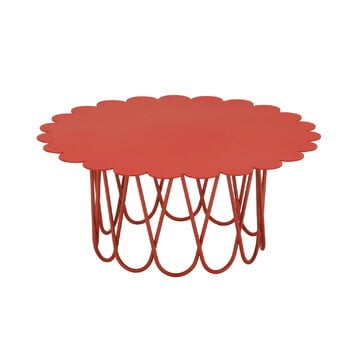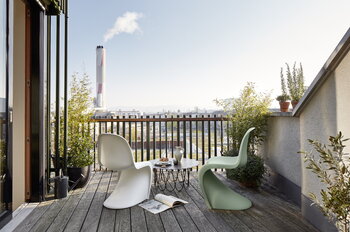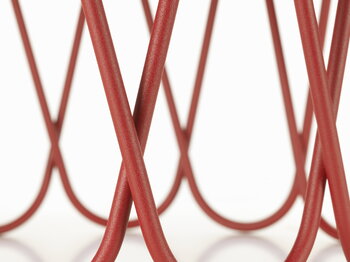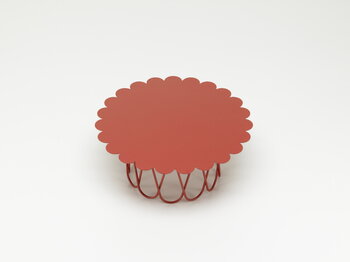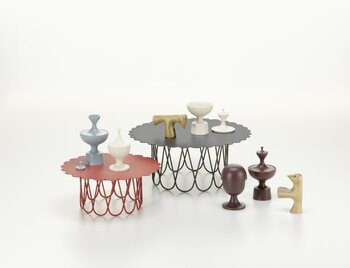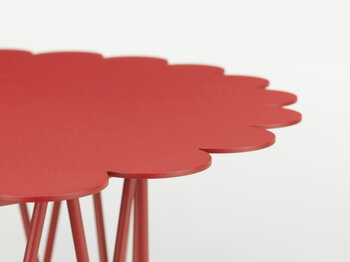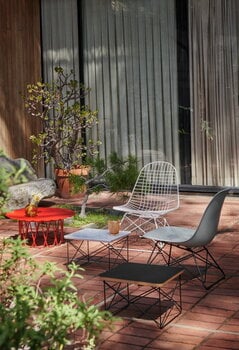The Vitra Flower Table, designed by Alexander Girard, boasts a playful expression and a form that resembles a flower in bloom. The original design was crafted from brass, but, in collaboration with the Girard family, Vitra later developed a steel version of the table. This version is not only low maintenance but also suitable for outdoor use.
The cheerful Flower Table was originally created for the famous Miller House. Girard was in charge of the home's interior design, and one of its special features was a sunken lounge area with a built-in sofa surrounding it on each side – Girard designed Flower Table as the centrepiece of this conversation pit. The Miller House is located in the US, in Columbus, Indiana, and nowadays serves as a museum. The brass Flower Table still stands in the centre of the lounge area where it can be marveled at when visiting the museum.
